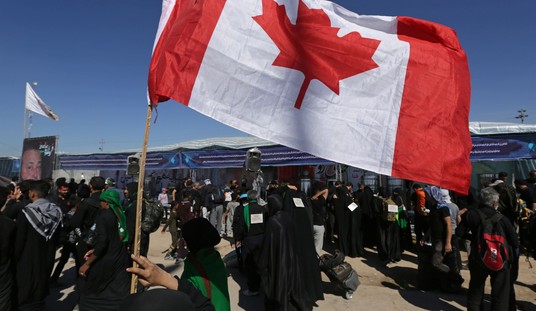If it’s already this high, imagine what the fallout from Kavanaugh-geddon will do. I keep hearing from righties that if the nomination goes down, enthusiasm will completely collapse among the base and Republicans will be routed. That sounds like an empty threat to McConnell to me: Don’t back down or we’ll walk.
In reality, I think the opposite is more likely true. If the GOP confirms Kavanaugh, plenty of righty voters will view two successful SCOTUS vacancies filled and think “Mission accomplished. Our 2016 work is done.” It’s liberals who’ll be scrambling to turn out, convinced that if a Republican majority will confirm Kavanaugh they’ll confirm anyone. They need to retake the Senate right now, before Ginsburg leaves the Court.
Whereas if Kavanaugh goes down, Trump will hit the trail and astutely overlook the role of Collins/Murkowski/Flake in it and emphasize the role red-state Democrats played in his defeat. “A good man was smeared and his career ruined,” POTUS will say. “We could have avoided it if Joe Manchin/Heidi Heitkamp/Joe Donnelly/Claire McCaskill etc etc had stood up to their party, for decency. But what we learned from that confirmation vote is that a Democrat will always side with the left. There’s only one solution.” That’s a turnout pitch that will get Republicans excited to vote.
Anyway, people are ramped up. New from Pew:

All three of the other midterms plotted on that graph, 2006, 2010, and 2014, were major wave elections for one party or the other. And yet the share *in each party* that now says they’re more enthusiastic than usual to vote is higher than it was for any one of them.
Fluke result, maybe? Maybe not. From Gallup:

You can go back 25 years, to the big Republican wave of 1994, and not get a higher share of the public saying they’re more enthusiastic than usual to vote than say so right now. The Gallup data comes with a caveat for Republicans, though: Although the share of Democrats who are more enthusiastic than usual to vote is at a modern high for the party (61 percent), the share of Republicans who are more enthusiastic than usual was higher in 2010 (63 percent) than it is now (58 percent). On the other hand, the Republican share in the big red wave year of 2014 was 10 points lower than it is right now. GOPers are plenty excited to vote, if maybe not quite as excited as they were in the first Obama midterm.
Not only that, but Republicans’ share of the generic ballot is also at a new Trump-era high today of 41.4 percent. Still lots of ground to make up with Democrats, who lead by 7.2 points, but maybe the Kavanaugh saga will assist in that.
A weird reality of the Kavanaugh confirmation battle is that it’s easy to imagine a bad short-term outcome for each party producing an excellent long-term outcome for them. Democrats might lose the confirmation vote but then retake both houses of Congress when angry liberals storm the polls. Meanwhile, a damaged Justice Kavanaugh might tack a bit left on the Court to shore up his credibility with more liberal Americans. The left might even take a run at impeaching him next year. If Republicans lose the confirmation vote, meanwhile, their voters might storm the polls, Trump might get a redder Senate next year, and righties might end up with Justice Amy Coney Barrett. There’s no absolute disaster in the works for either side as of today, regardless of how the vote goes. The day after Election Day is, of course, another story.








Join the conversation as a VIP Member